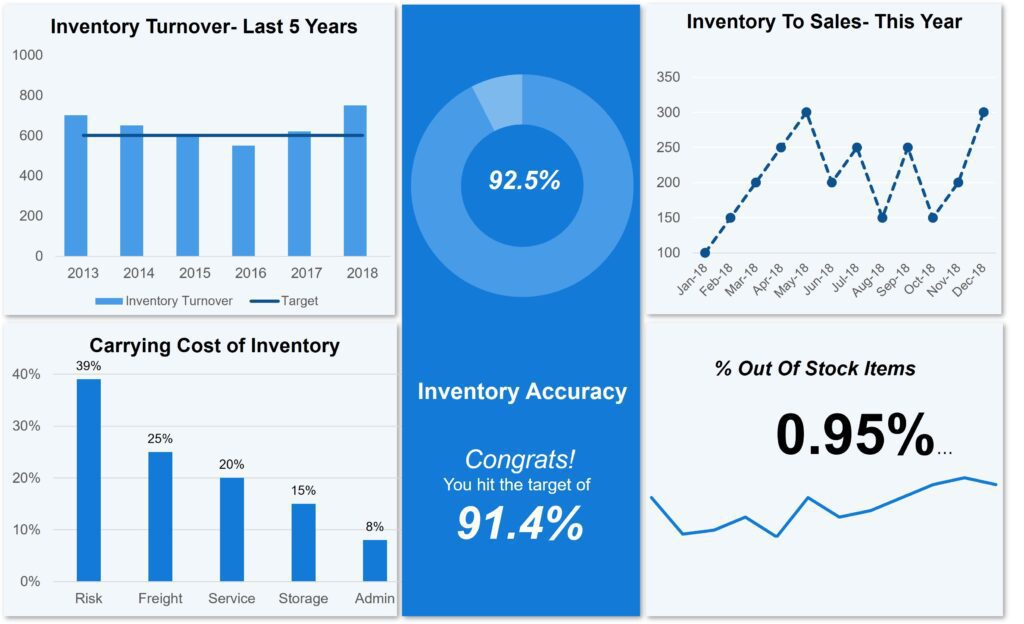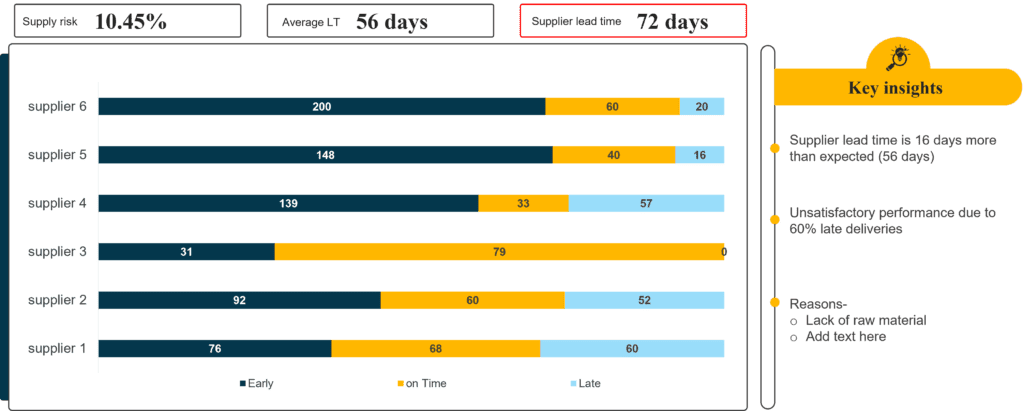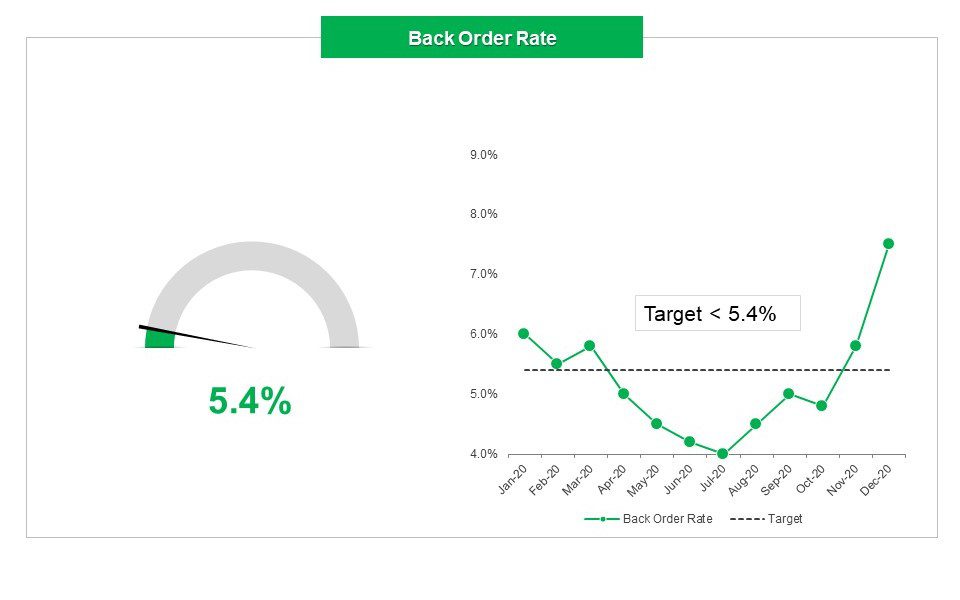Following on the past few years of unprecedented supply chain challenges, you’ve likely faced significant disruptions that have exposed vulnerabilities and inefficiencies in your supply chain network. As a result, the need to measure, monitor, and continuously improve your supply chain functions has become paramount.
From our experience in the work we’ve done with countless clients, we believe effective performance metrics are no longer tools for operational efficiency but critical requirements for survival and competitive differentiation. By focusing on the right key performance indicators (KPIs), you can plan better, navigate uncertainties, mitigate risks and understand where you need to enhance your supply chain to be more robust and responsive.
Here are the crucial KPIs you should consider, along with the reasons why each is important.
This metric measures the total time taken from when a customer places an order to when it is delivered. It encompasses order processing, picking, packing, shipping, and delivery.
Why It Matters: Shorter cycle times lead to higher customer satisfaction and increased loyalty. It also improves cash flow by reducing the time between order receipt and revenue recognition. By monitoring and optimizing cycle times, you can identify bottlenecks and implement improvements.
Inventory turnover indicates how many times inventory is sold and replaced over a specific period.
Why It Matters: High turnover rates generally signal strong sales and efficient inventory management, while low turnover rates could indicate overstocking or slow-moving goods. This KPI helps you maintain optimal inventory levels, reduce holding costs, and minimize the risk of obsolescence.

This metric tracks the percentage of orders delivered without any issues, such as delays, damages, inaccuracies, or incompleteness.
Why It Matters: A high perfect order rate is a testament to the efficiency and reliability of your supply chain operations. It directly impacts customer satisfaction and demand consistency. Tracking this helps pinpoint areas for process improvements and quality assurance.

This KPI measures the total supply chain cost (including production, transportation, warehousing, and inventory management) relative to total sales.
Why It Matters: Monitoring this ratio allows you to gauge the cost-effectiveness of your supply chain. Lowering these costs without sacrificing service quality can significantly enhance profitability. It also enables better budgeting and resource allocation.
This metric determines the time taken by suppliers to deliver materials or products from the point of order.
Why It Matters: Knowing supplier lead times aids in accurate demand forecasting, better production planning, and avoiding stockouts or overstock situations. It helps you maintain a balance between maintaining safety stock and minimizing holding costs.

This KPI tracks the accuracy of freight invoices, ensuring that the charges billed match the agreed terms and actual services rendered.
Why It Matters: Accurate freight billing prevents overpayment, disputes, and delays, and fosters good relationships with logistics partners. Regular monitoring can reveal systemic issues in freight management and opportunities for cost savings.
Return rate measures the percentage of products returned by customers due to defects, damages, or dissatisfaction.
Why It Matters: High return rates can significantly impact profitability and customer perception. Monitoring returns helps you identify underlying issues in product quality, packaging, or logistics processes and provides a pathway for continuous improvement.
This metric assesses the accuracy of your demand forecasts against actual sales.
Why It Matters: Accurate demand forecasting reduces the risk of stockouts and excess inventory, enabling more efficient procurement and inventory management. Improved forecast accuracy also enhances customer satisfaction and helps in strategic planning.
The backorder rate measures the percentage of orders that cannot be fulfilled at the time of order placement due to insufficient stock.
Why It Matters: Lower backorder rates indicate a well-maintained inventory system capable of meeting customer demand promptly. This KPI is crucial for maintaining customer trust and reducing potential lost sales.

After reading this, you should have a good idea of the areas within your supply chain that pose the greatest challenges and where you should focus first to build KPIs leading to continuous improvement activities.
Establishing and monitoring key performance metrics will provide you a comprehensive view of the health of your supply chain and where it needs improvement in order to meet your companies overall objectives and growth plans.
Our business consulting services include key supply chain expertise bringing a wealth of knowledge and operations experience to drive the changes you need to make in your supply chain. If you don’t have the capacity to do this alone, let’s have a conversation on what we can do to get your supply chain where it needs to be.